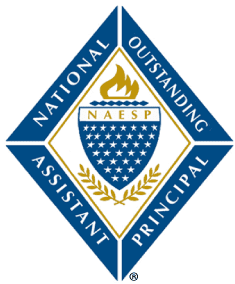
Katrina W. Smith
Buchanan Primary School
Buchanan, Georgia
katrinaw.smith@haralson.k12.ga.us
Best Practices
1) I am deeply inspired and motivated by Dr. Ruby Payne’s framework for understanding emotional poverty and her extensive works on the culture of emotional poverty and its relation to education. As an individual who has confronted the effects of emotional hardship, I am familiar with the despair and frustration of those whose education is affected by this issue. As a result of my own experiences, I am convinced that addressing emotional outbursts, anger, anxiety, and avoidance and providing the strategies necessary to change the behavior’s motivation will directly impact our students’ academic success. As an assistant principal, I am challenged with being academically focused on student results and ensuring that every student receives a quality education. It is evident, now more than ever, that education must also focus on improving the social and emotional welfare of students of all ages, races, and economic statuses. I encounter countless knowledgeable students and capable of learning, but their removal from the classroom negatively impacts them emotionally and academically. Addressing the social and emotional aspects first will increase the student’s access to education and make the difference between despondency and hope.
I believe instructional leaders hold one of the most significant positions: teaching and equipping children to be thoughtful, productive, and prosperous future leaders of the world. Education does not merely begin and end with academic excellence; it must foster through relationships and understanding. I work as an advocate for parents and families in need. I assist with items such as doctor’s appointments (setting appointments and virtual assistance at school), Tanner Behavioral Health referrals and other Social-Emotional assistance, work with local charities to secure food, clothing, shelter, and offer support in using our school technology applications. Fostering relationships and support builds a level of trust between the student, parent, and school, building a bridge to keeping students in school and focused on becoming lifelong learners.
2) The one binding constant I identify that will either make or break a school culture is communication between the teacher and the leader. When people are unaware of certain situations or information, they feel anxious, reluctant, and neglected. It is my responsibility to ensure that their time and opinions are valued, and communication is clear. I believe that leadership indeed revolves around one’s relationship with others. People will not follow those they do not trust to take care of them. A good leader must first learn to follow and serve others, then cast the school vision through communication and collaboration.
Early in my career, I held a tremendous drive and ambition to be successful within a leadership position. I possess a compassionate and sensitive manner of dealing with colleagues, parents, students. I can articulate my aspirations, goals, and expectations in an enthusiastic and inspirational way. I have spent the last twenty-three years working with and motivating students and teachers to achieve their maximum potential. I have served as a classroom teacher-gifted and inclusion, response to intervention/504 coordinator, academic coach, and assistant principal. Each position has allowed me to gather and provide feedback to teachers in curriculum, student achievement, and student behavior. As an assistant principal at Buchanan Primary, I strive to make communication between my faculty and me a priority. Teachers are encouraged to look at my calendar and send an invite to discuss any topic of their choosing. Occasionally, I find those that are less likely to reach out, so I reach out to them. I am sincere in my feedback and always offer support in improvement. In collaboration with the teacher and their teams, I conduct focus walks and identify areas of improvement. The teacher and I collaborate with our district literacy team and work on a plan of action and implementation. This approach builds respect and trust, so teachers are more eager to communicate when they need support. Simon Sinek says it best: “Great leaders communicate, and great communicators lead.”


